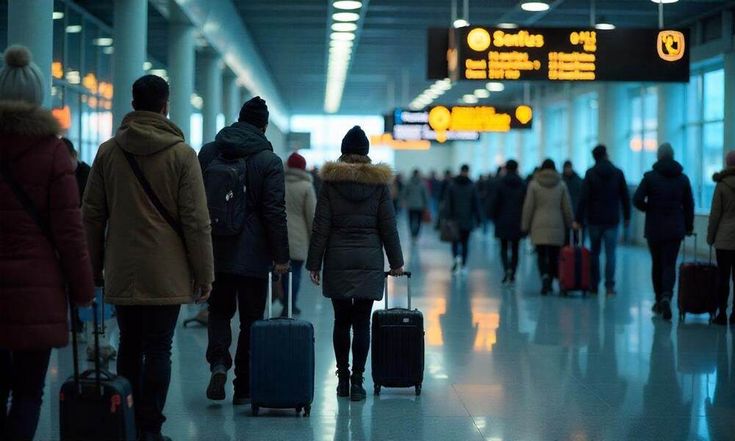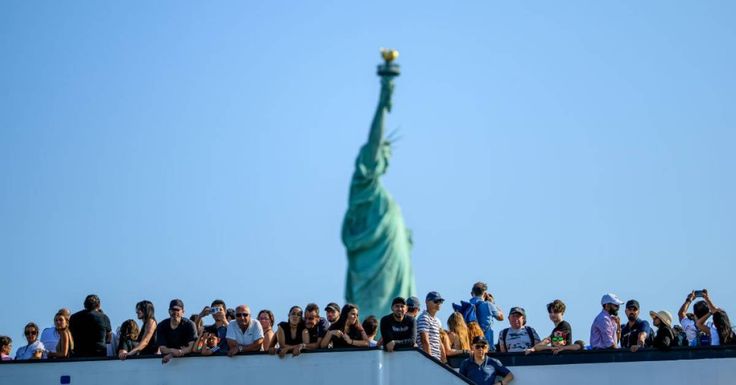A new era for international travel to the United States has begun, marked by both a more restrictive political climate and a significant increase in the financial cost of entry. The U.S. government has just announced that the fee for its Electronic System for Travel Authorization (ESTA) will nearly double, from $21 to $40, effective September 30, 2025. This move, mandated by the “One Big Beautiful Bill Act” passed in July, is more than a simple price hike; it is the latest in a series of policy decisions that are having a profound impact on the nation’s travel industry. This new fee, alongside a broader immigration agenda perceived as unwelcoming, is accelerating a trend that has the U.S. travel and tourism sector bracing for a historic U.S. tourism decline.
According to projections from the World Travel & Tourism Council (WTTC), the United States is the only country among 184 economies studied that is projected to see a decline in international visitor spending in 2025. This is a dramatic reversal from a year ago, when forecasts predicted a strong rebound in international arrivals. Instead, data from the U.S. National Travel and Tourism Office (NTTO) shows that international arrivals have already dropped by 1.6% so far in 2025, a loss of over 3 million visitors. This downturn is largely attributed to a combination of more restrictive policies, a less-welcoming international tone, and the rising costs associated with visiting the U.S.
The ESTA Fee Hike: A New Financial Barrier
The new ESTA fee structure is a key component of this shift. For travelers from more than 40 countries under the Visa Waiver Program (VWP), an approved ESTA is a mandatory requirement for entry for tourism or business. The new $40 fee is broken down into a $10 processing fee, an unchanged $17 travel promotion fee, and a new $13 Treasury General Fund fee. While the individual increase might seem small, its cumulative effect on family and group travel could be substantial. A family of four, for example, will now have to pay $160 for their travel authorizations, compared to $84 under the old system. This extra financial burden could be enough to deter budget-conscious travelers and make other destinations more appealing.
The irony of the fee increase is that while it is partly intended to fund the travel promotion agency Brand USA, the same legislation that mandated the fee increase also includes a drastic cut in funding for that organization. This has led to confusion and frustration within the travel industry, which sees the move as counterproductive. The U.S. tourism decline is not just a statistical phenomenon; it is a tangible reality for businesses across the country, from hotels and tour operators to airlines and small businesses.

The Broader Impact on International Visitors
Beyond the ESTA fee, other financial and policy changes are contributing to the downturn. A new “visa integrity fee” of $250 is set to go into effect on October 1, 2025, for travelers from non-visa waiver countries, including key markets like Mexico, India, Brazil, and China. This fee could push the total cost of a U.S. visa to nearly $442, making it one of the most expensive in the world. For countries with a large and growing middle class, such as India, this steep increase could be a significant deterrent. In fact, India recorded its first decline in travel to the U.S. in over 20 years in June 2025, a trend that is likely to be exacerbated by the new fee.
The more restrictive immigration climate also plays a significant role. Reports have emerged of travelers from Western countries being detained or denied entry at U.S. borders, creating a perception of an unwelcoming destination. This sentiment is particularly impactful for leisure travelers who have a wide range of options for their holidays. Experts have pointed to a shift in travel patterns, with visitors who would have once chosen the U.S. now opting for more accessible and welcoming destinations in Europe or Canada. The U.S. tourism decline is a direct result of these policy choices.
A Troubling Trend in a Global Context
The U.S. is an anomaly in the global travel landscape. While the rest of the world is seeing a strong rebound in tourism post-pandemic, the U.S. is moving in the opposite direction. This trend has far-reaching consequences. According to a report by Tourism Economics, the decline in international arrivals is expected to lead to a loss of $12.5 billion in travel spending in 2025 alone. This hits a variety of sectors, from hospitality and retail to entertainment and transportation. The downturn also raises concerns about the country’s ability to attract visitors for major upcoming events, such as the 2026 FIFA World Cup and the 2028 Olympic Games in Los Angeles, which rely heavily on international attendees.
The economic fallout is not limited to large cities; it is felt in communities and businesses that depend on tourism for their livelihoods. From small tour operators to local restaurants, the ripple effect of the U.S. tourism decline is already being felt. The new fees, combined with ongoing immigration rhetoric, are creating a fragile ecosystem for the travel industry. The U.S. Travel Association, among other industry groups, has voiced strong opposition to the new fees and the overall restrictive tone, arguing that these policies risk undermining the country’s global appeal and its tourism recovery efforts.
In conclusion, the U.S. travel industry is at a critical juncture. The new ESTA fee increase is a significant financial barrier that, when combined with a broader and more complex immigration policy, is contributing to a worrying downturn in international tourism. This trend is a clear signal that the U.S. may be losing its competitive edge as a global travel destination. While the long-term effects remain to be seen, the immediate impact on businesses, tourism spending, and the country’s global image is already undeniable.
Sources:
- Travel Weekly
- Gulf News
- American Bazaar Online
- The Economic Times


